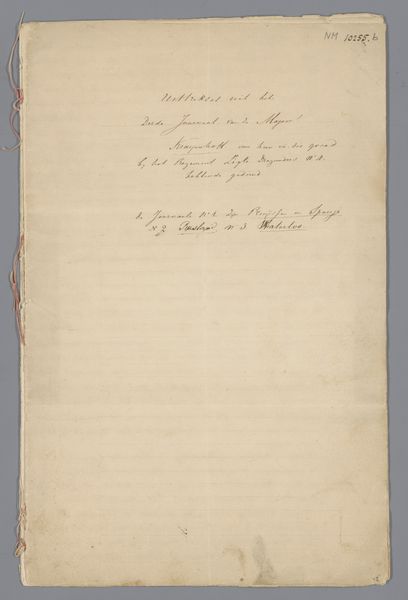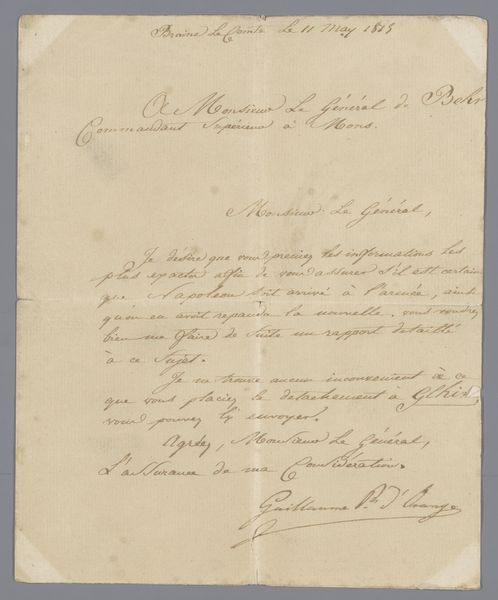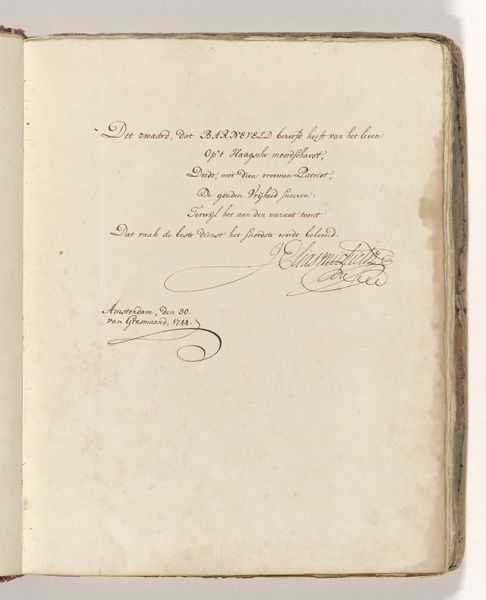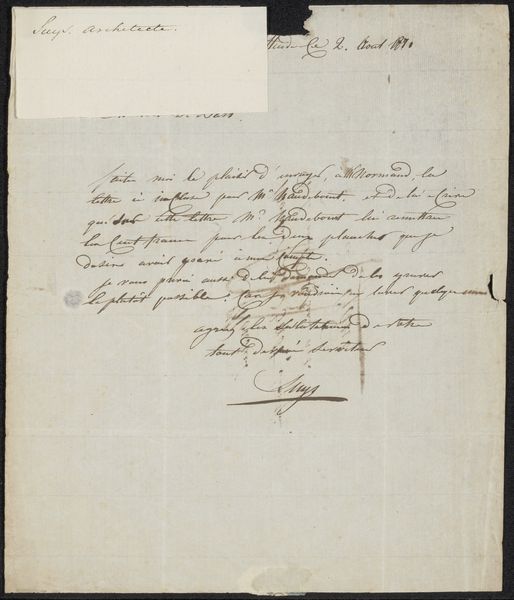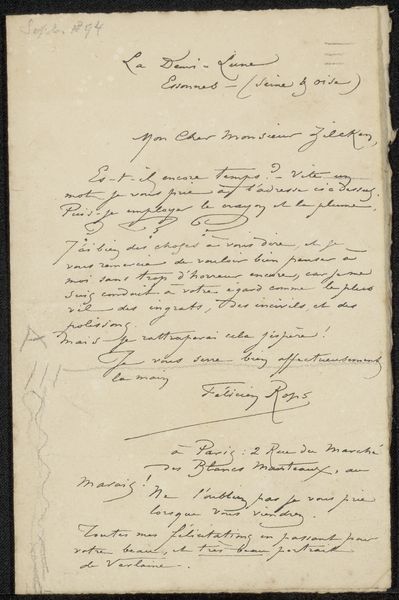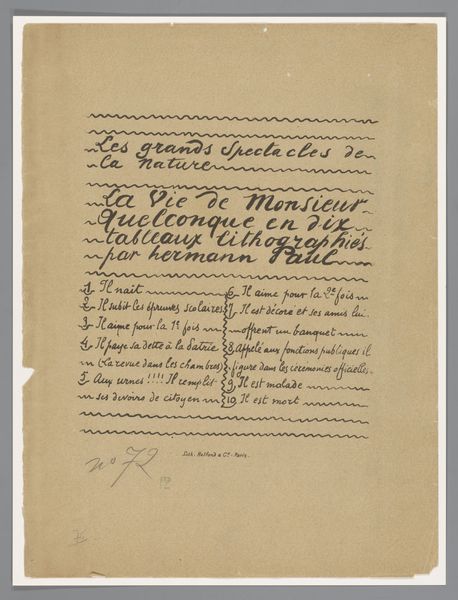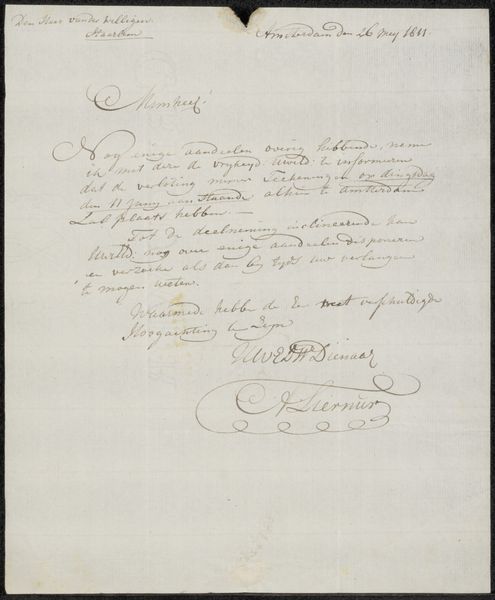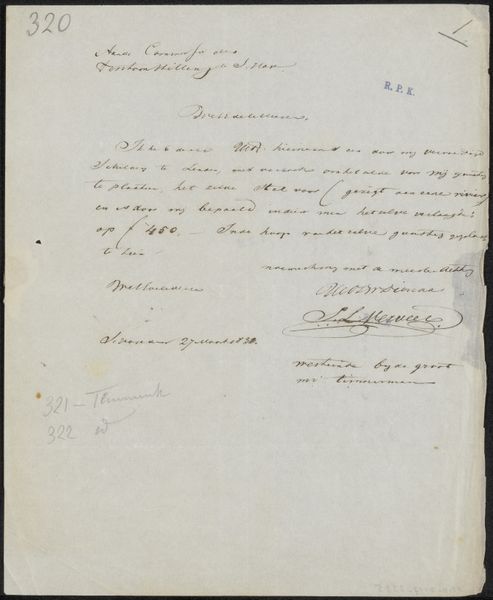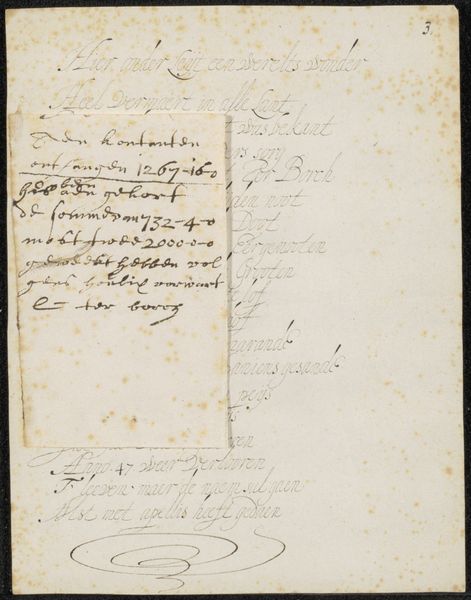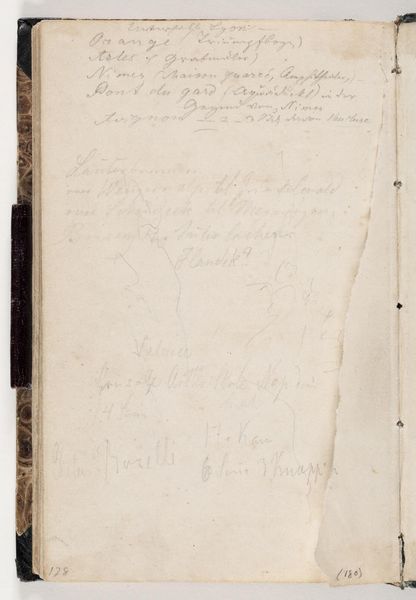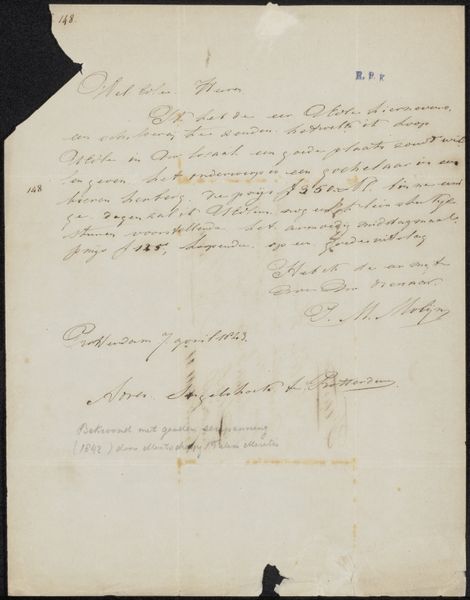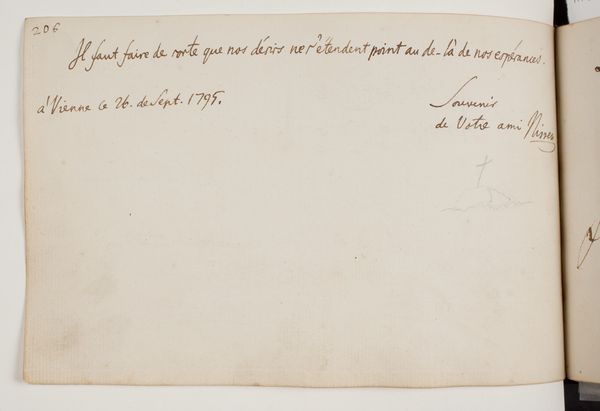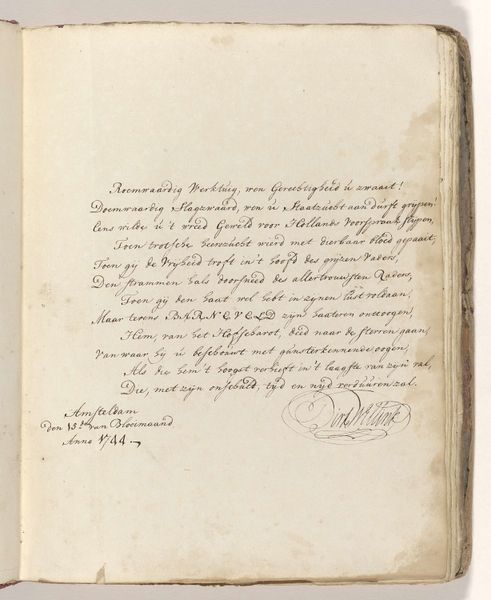
Portfolio Cover for a Group of Drawings showing Porcelain Vessels 1765 - 1790
0:00
0:00
drawing, print, paper, ink
#
drawing
# print
#
paper
#
ink
#
history-painting
#
miniature
Dimensions: 17 1/16 × 11 1/4 in. (43.3 × 28.5 cm) [half of the folio] Sheet: 10 1/16 × 8 15/16 in. (25.5 × 22.7 cm)
Copyright: Public Domain
Editor: This is a portfolio cover showcasing drawings of porcelain vessels, dating from 1765 to 1790, attributed to an anonymous artist. The artwork combines drawing and print techniques on paper, using ink. The cover has visible aging and handling. What strikes me most is the apparent value once placed on these drawings, and how labor intensive it must have been to produce them. What do you see in this piece? Curator: I see a direct connection to the burgeoning porcelain industry of the late 18th century and the system of patronage surrounding it. Consider the inscription – referencing porcelain pieces belonging to governors. This speaks volumes about the commissioning of these works. Someone, likely employed, carefully rendered images of the vessels. It elevates what might be considered commercial reproduction into the realm of art, though the artist remains nameless. What do you think that says about artistic labour at the time? Editor: It suggests a blurring of the lines between craft and art. Was this drawing seen as merely functional – a record, or a sales tool? Or was there an acknowledgement of the skill involved, even if not attributed to a celebrated "artist"? The quality of paper used and inks, for instance, indicates some level of expense, implying more than mere documentation. Curator: Exactly! And think about the social context. Porcelain was a luxury good. Who had access to it, who profited from its manufacture and trade? These drawings provide access to those social dynamics – through materials, labor and even implied patterns of consumption. Editor: That’s a great point, seeing art as a function of those different types of labor in terms of producing material and reproducing it through visual documentation and record-keeping. Curator: Precisely. Examining such an item reveals production process as part of consumption culture! I hadn’t thought about it that way before, but I agree it's worth emphasizing those visual strategies.
Comments
No comments
Be the first to comment and join the conversation on the ultimate creative platform.
